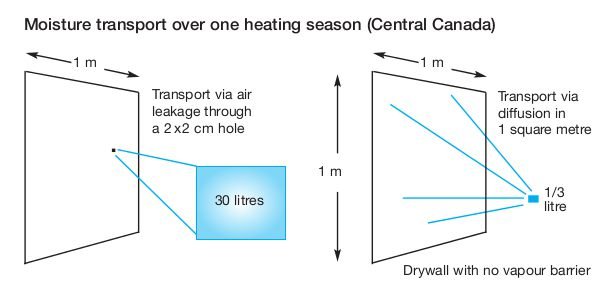Since the summer is coming and this thread has become a hot topic (pun unintended), this is a good time to discuss "Building Science", or "the collection of scientific knowledge that focuses on the analysis of the physical phenomena affecting buildings." Building Science encompasses a lot of different topics related to buildings, but we are mainly concerned with the building enclosure here.
The building enclosure consists of the walls, roofs, foundation walls, basement or floor slabs, windows, doors, as well as penetrations in the building enclosure. To reduce the use of A/Cs and heating equipment, having well-insulated walls, windows, and doors is important. However, proper air-sealing is arguably much more important when dealing with latent heat (wet heat).
How important? This diagram will explain (it's about heating season, but the principle is the same):
 https://www.ecohome.net/guides/2298/...n-air-barrier/
https://www.ecohome.net/guides/2298/...n-air-barrier/
On the left is a wall with a 1 square inch hole (or a series of holes totaling 1 sq. in.). It will let in a total of 30 liters (8 gallons) of water vapor over about 4-6 months through air leakage alone. That's how much water vapor is carried in the air.
On the right is a fully air-sealed wall with no vapor barrier. It will let in a total of 1/3 liter (1/12 gallon) of water vapor over about 4-6 months through water vapor diffusion through the wall.
That is why it is important to properly air-seal the building enclosure in any building. By sealing up as many holes and gaps as possible in the exterior wall and roof, you reduce the amount of water vapor in the air that you need to deal with through dehumidifiers or A/Cs. This will drastically cut down on cooling electrical bills while increasing occupant comfort.